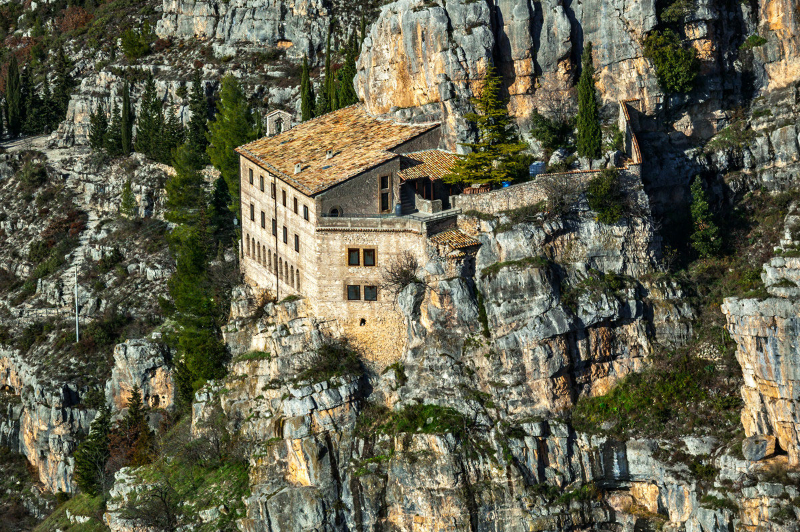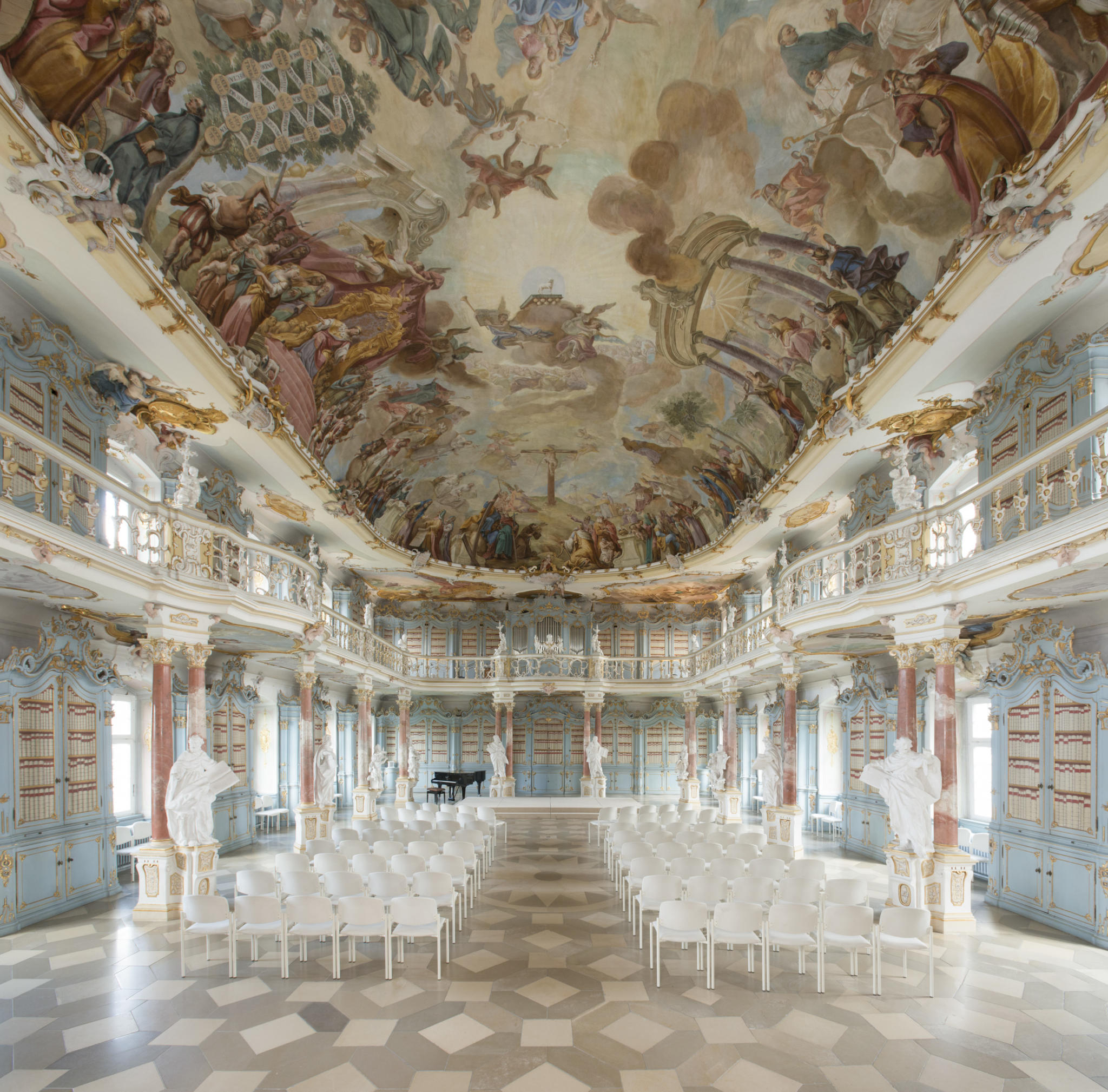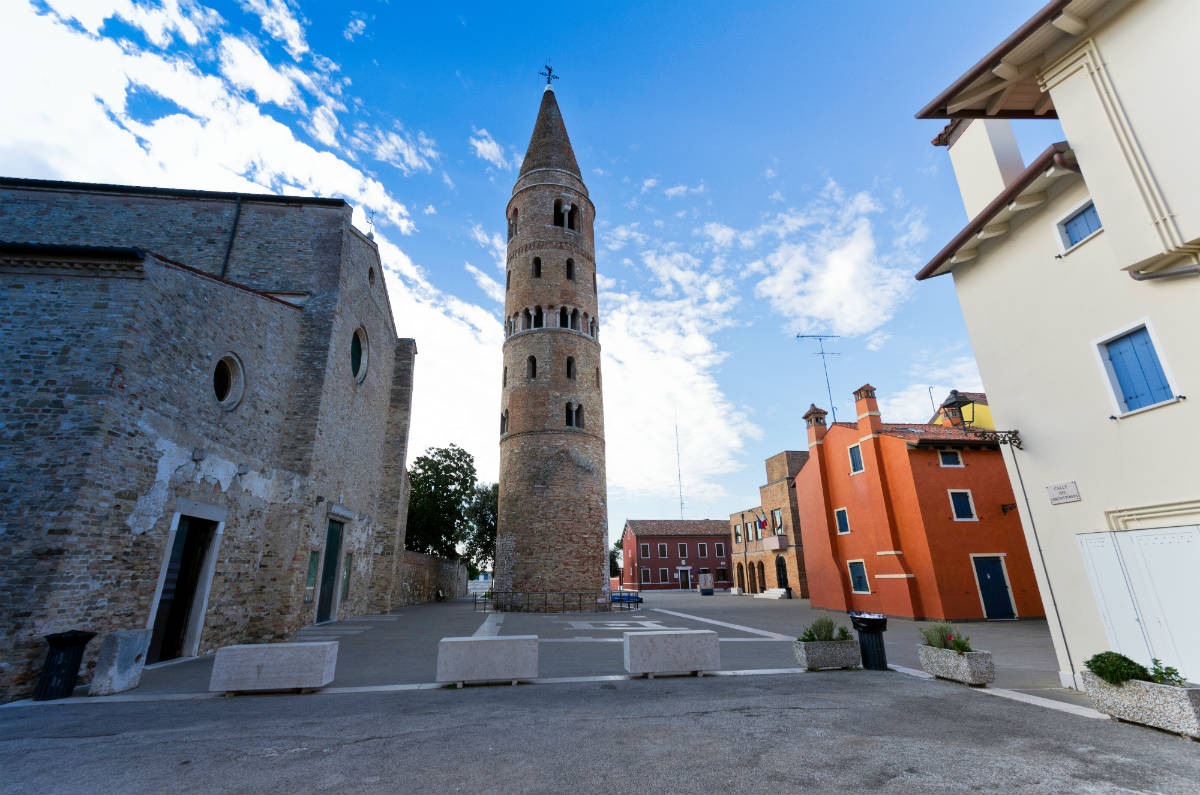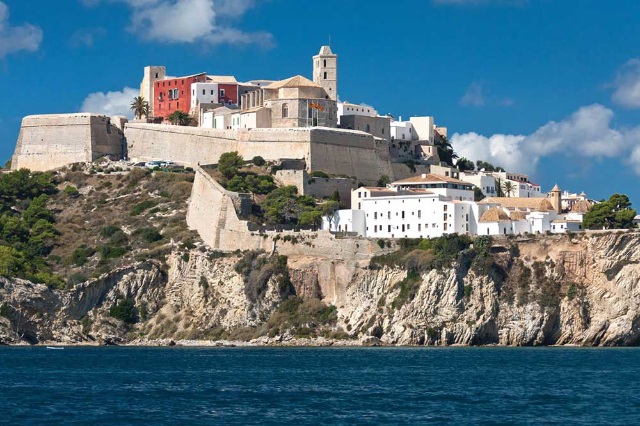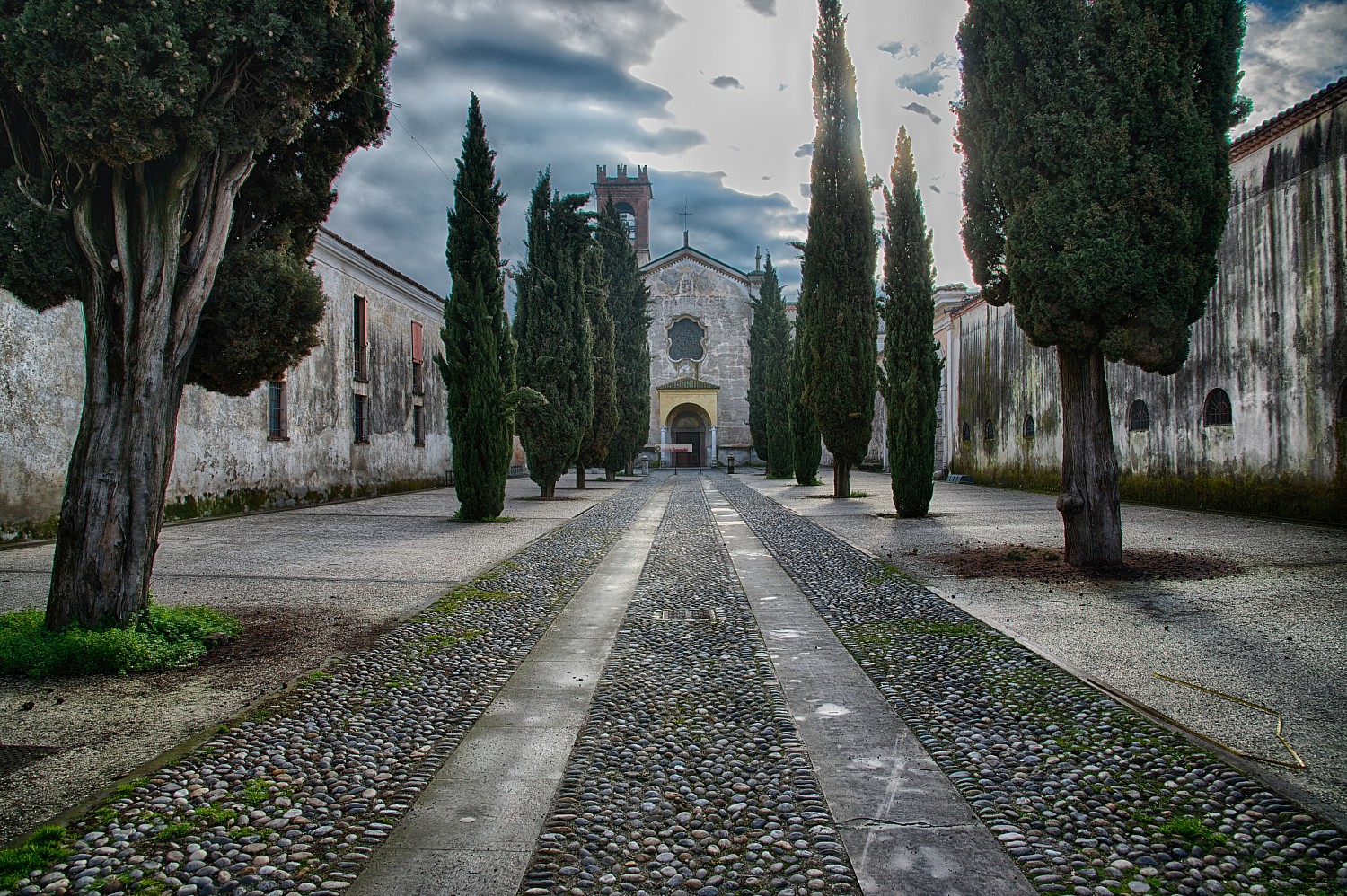The Celestinian Hermitage of Sant’Onofrio al Morrone is known for its spectacular location, perched on a huge rock wall.
Overlooking the Peligna Valley, the hermitage still preserves the severe and inaccessible aspect it had at the time of the Saint. The most interesting and suggestive area is constituted by the oratory and by the two following cells where San Pietro Celestino and the Blessed Roberto da Salle lived. The oratory is covered by frescoes painted by Master Gentile da Sulmona in 1200. The bottom part represents a crucifixion with Mary and Saint John at the foot of the Cross; on the lunette of the entrance Saint Benedict between the hermit Fathers Mauro and Antonio are depicted. On the left wall there is a portrait of Celestine depicted wearing a monastic habit and a white cloak. At the center, a simple and ancient altar has set in the middle a stone crucifix that, according to tradition, Celestine V would have blessed during the mass that he celebrated here in pontifical clothes before going to Naples. The building includes a series of cells and rooms, recently restored, which until the beginning of this century housed isolated religious figures and lay hermits.
History and legend: Here Pietro Angelerio, the future Pope Celestine V, spent most of his life. Within its walls is preserved the memory of Pope Celestine V, Holy Confessor, who retired here in June 1293. This was the last hermitage built by fra’ Pietro after 1290, he settled there in 1293 but stayed only one year, until the day he was elected Pope. The hermitage was abandoned in 1807 after the suppression of some religious orders but it was later inhabited again by a series of hermits, lay and religious. Within these walls, while observing the penitential fast in honor of the Virgin Assumption and St. Peter, Brother Peter was reached by the news of his election to the papacy. Tradition has it that the Crucifix before which the Saint was praying nodded his head and only then did Peter utter these words: "I assent to the vows of the Sacred College and accept the Supreme Pontificate. May the Lord help me to bear the very heavy yoke". Petrarch, in De Vita solitaria, tells the life of Robert of Salle, whose secular name was Santuccio, and recalls that when Celestine V was about to leave Sant’Onofrio, he knelt before him and asked for a holy blessing. Peter returned to Sant’Onofrio after the abdication of the papacy and remained hidden there until February 1295 when he left with the desire to reach Puglia to embark for Greece.
Rites and events: The place of worship is the destination of pilgrimages and propitiatory rites, such as rubbing (lithotherapy) of the painful parts of the body on the walls of the cave that opens in the area below the hermitage inhabited by Celestine; the cave has a trickle of water, to which the faithful attribute thaumaturgical powers as well as the collection of dust, rubble and twigs of plants growing around the sanctuary and the throwing of stones from the terrace, which symbolize the negative influences and pain. The Saint is celebrated on June 12, but also on May 19, the day of the death of Celestine V, the faithful go to the Hermitage.
